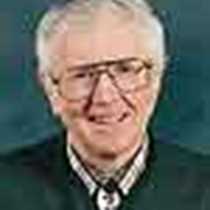Astoria, Oregon
The oldest American city west of the Rocky Mountains, Astoria, hugs both sides of Coxcomb Hill which pokes into the broad Columbia River estuary.
At this strategic river juncture with the Pacific Ocean, John Jacob Astor’s ship Tonquin arrived from New York City by way of Cape Horn in 1811. Astor intended a fur trading empire and the first American settlement on these far shores.
Shortly after, Astor’s “overlanders” also reached the new Fort Astor. They were the second party of Americans to cross the continent after Lewis and Clark.
But Astor’s endeavor was short-lived because of the War of 1812 with Great Britain. His representatives, nearly all Highland Scots and French Canadians hired from the Northwest Fur Company out of Montreal, Canada, sold out Astor for pennies on the dollar to their colleagues. They said a British man-o-war was surely en route to capture the Fort. Down came the Stars and Stripes, up went the Union Jack and it became Fort George operated by the Hudson Bay Company.
A few blocks from where Sea Bird docked is the site and partial replica of Fort Astor. Here, the Japanese people placed an engraved memorial to an American little recognized by us, Ranald MacDonald (1824-1894).
He was the son of Archibald MacDonald who oversaw Fort George and married Princess Raven, daughter of Chief Concomly of the powerful Chinook tribe.
At age 24, Ranald, who believed there was a link between his Chinook ancestors and the Japanese, risked his life to defy a 200-year-old imperial edict that barred foreigners from the Celestial Isles.
Though a captive, Ranald taught English to the14 Japanese scholars designated by the emperor. These scholars helped lead their country out of isolation when they negotiated with Commodore Perry of the U.S. Naval expedition that “opened Japan” to the world.
It was this half-breed lad from Astoria who penetrated Japan with friendship and the English language and who is honored by Japanese people.
Our guests also experienced Astoria’s environs with a trip to the Astor Column atop Coxcomb hill for a 360-degree overview of bays, rivers, Pacific Ocean, coast and cascade ranges and camp sites of the Corps of Discovery before they went into winter encampment at Fort Clatsop. Many walked back to the ship taking in an array of national historic designated homes with their massive displays of azalea and rhododendron.
The day’s climax, before beginning our upriver return to Portland, was a run onto the Columbia River Bar where the great swells of the Pacific meet the currents of the Columbia. Here, off Cape Disappointment, Capt. Robert Gray in 1792 first established that this was the long sought River of the West which he then named for his ship, Columbia Rediviva.
The oldest American city west of the Rocky Mountains, Astoria, hugs both sides of Coxcomb Hill which pokes into the broad Columbia River estuary.
At this strategic river juncture with the Pacific Ocean, John Jacob Astor’s ship Tonquin arrived from New York City by way of Cape Horn in 1811. Astor intended a fur trading empire and the first American settlement on these far shores.
Shortly after, Astor’s “overlanders” also reached the new Fort Astor. They were the second party of Americans to cross the continent after Lewis and Clark.
But Astor’s endeavor was short-lived because of the War of 1812 with Great Britain. His representatives, nearly all Highland Scots and French Canadians hired from the Northwest Fur Company out of Montreal, Canada, sold out Astor for pennies on the dollar to their colleagues. They said a British man-o-war was surely en route to capture the Fort. Down came the Stars and Stripes, up went the Union Jack and it became Fort George operated by the Hudson Bay Company.
A few blocks from where Sea Bird docked is the site and partial replica of Fort Astor. Here, the Japanese people placed an engraved memorial to an American little recognized by us, Ranald MacDonald (1824-1894).
He was the son of Archibald MacDonald who oversaw Fort George and married Princess Raven, daughter of Chief Concomly of the powerful Chinook tribe.
At age 24, Ranald, who believed there was a link between his Chinook ancestors and the Japanese, risked his life to defy a 200-year-old imperial edict that barred foreigners from the Celestial Isles.
Though a captive, Ranald taught English to the14 Japanese scholars designated by the emperor. These scholars helped lead their country out of isolation when they negotiated with Commodore Perry of the U.S. Naval expedition that “opened Japan” to the world.
It was this half-breed lad from Astoria who penetrated Japan with friendship and the English language and who is honored by Japanese people.
Our guests also experienced Astoria’s environs with a trip to the Astor Column atop Coxcomb hill for a 360-degree overview of bays, rivers, Pacific Ocean, coast and cascade ranges and camp sites of the Corps of Discovery before they went into winter encampment at Fort Clatsop. Many walked back to the ship taking in an array of national historic designated homes with their massive displays of azalea and rhododendron.
The day’s climax, before beginning our upriver return to Portland, was a run onto the Columbia River Bar where the great swells of the Pacific meet the currents of the Columbia. Here, off Cape Disappointment, Capt. Robert Gray in 1792 first established that this was the long sought River of the West which he then named for his ship, Columbia Rediviva.




